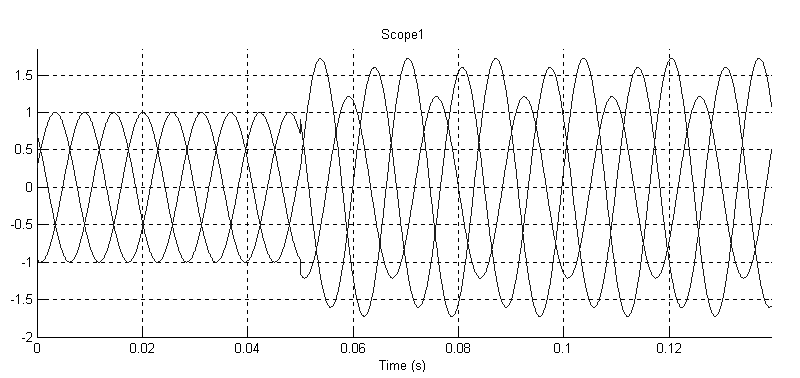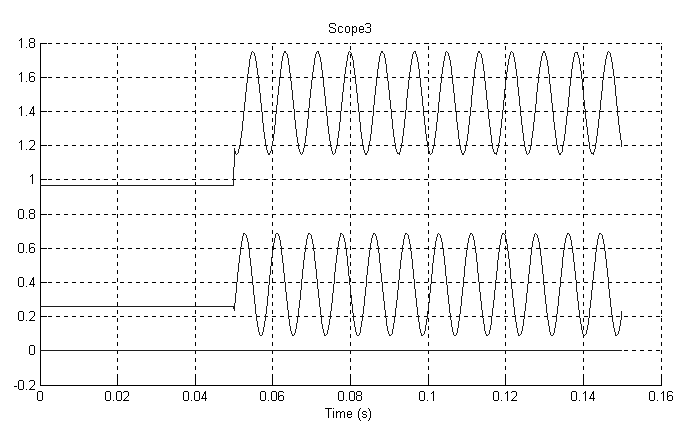

| SimPowerSystems |   |
Perform a Park transformation from the three-phase (abc) reference frame to the dq0 reference frame
Library
Description
The abc_to_dq0 Transformation block computes the direct axis, quadratic axis, and zero sequence quantities in a two-axis rotating reference frame for a three-phase sinusoidal signal. The following transformation is used:
The transformation is the same for the case of a three-phase current; you simply replace the Va, Vb, Vc, Vd, Vq, and V0 variables with the Ia, Ib, Ic, Id, Iq, and I0 variables.
This transformation is commonly used in three-phase electric machine models, where it is known as a Park transformation. It allows you to eliminate time-varying inductances by referring the stator and rotor quantities to a fixed or rotating reference frame. In the case of a synchronous machine, the stator quantities are referred to the rotor. Id and Iq represent the two DC currents flowing in the two equivalent rotor windings (d winding directly on the same axis as the field winding, and q winding on the quadratic axis), producing the same flux as the stator Ia, Ib, and Ic currents.
You can use this block in a control system to measure the positive-sequence component V1 of a set of three-phase voltages or currents. The Vd and Vq (or Id and Iq) then represent the rectangular coordinates of the positive-sequence component.
You can use the Math Function block and the Trigonometric Function block to obtain the modulus and angle of V1:
This measurement system does not introduce any delay, but, unlike the Fourier analysis done in the Sequence Analyzer block, it is sensitive to harmonics and unbalances.
Dialog Box
Inputs and Outputs
 t) cos(
t) cos( t)] values, where
t)] values, where  is the rotation speed of the reference frame.
is the rotation speed of the reference frame. Example
The psb3phsignaldq.mdl demo uses a Discrete 3-Phase Programmable Source block to generate a 1 p.u., 15 degrees positive sequence voltage. At 0.05 second the positive sequence voltage is increased to 1.5 p.u. and at 0.1 second an imbalance is introduced by the addition of a 0.3 p.u. negative sequence component with a phase of -30 degrees. The magnitude and phase of the positive-sequence component are evaluated in two different ways:
Start the simulation and observe the instantaneous signals Vabc (Scope1), the signals returned by the Sequence Analyzer (Scope2), and the abc-to-dq0 transformation (Scope3).

Note that the Sequence Analyzer, which uses Fourier analysis, is immune to harmonics and imbalance. However, its response to a step is a one-cycle ramp.
The abc-to-dqo transformation is instantaneous. However, an imbalance produces a ripple at the V1 and Phi1 outputs.
See Also
dq0_to_abc Transformation
 | Blocks - Alphabetical List | AC Current Source |  |